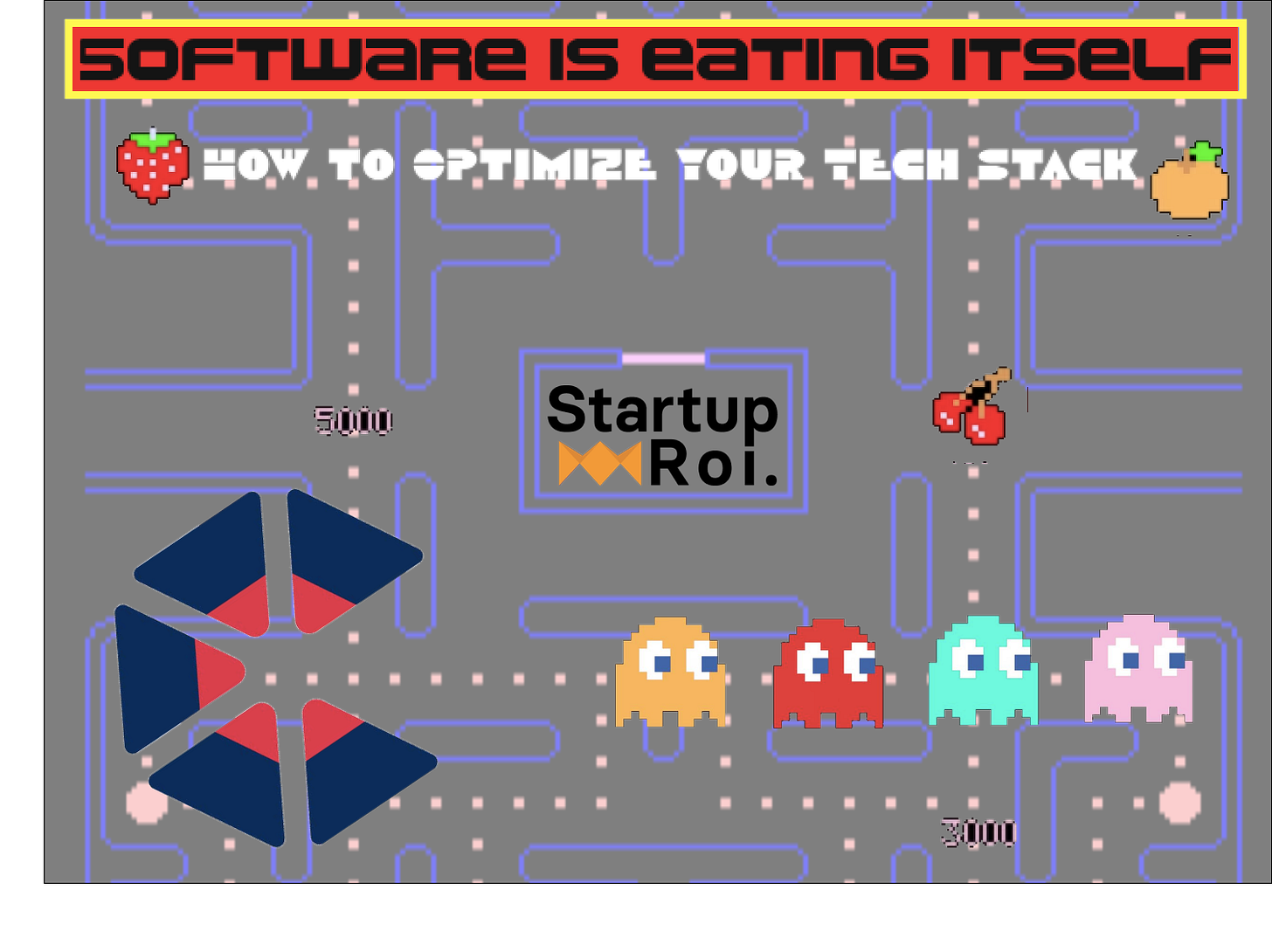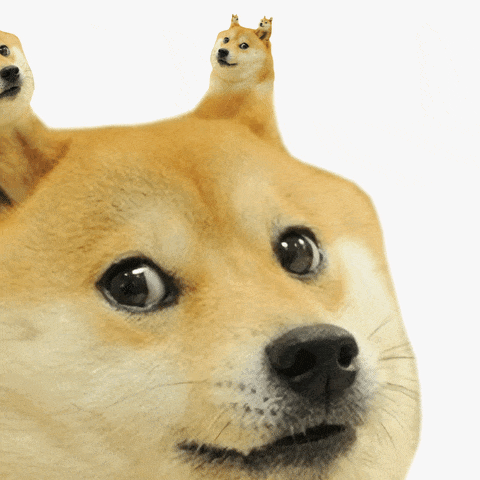Welcome to Startup ROI, where we explore global technology trends and how they manifest themselves in France 🇫🇷 . Whether you're an entrepreneur, investor or tech enthusiast, I'm glad to have you here!
Want to sponsor or collaborate? 📩 bonjour@startup-roi.com
Join the community for in-depth analysis on French Tech:
I have to admit, I felt a bit sheepish about the title of this essay. The phrase from which it's derived is so ubiquitous in tech circles that it can feel trite. But the reality is, this one phrase, uttered over a decade ago by Marc Andreessen, is one of few predictions that has held up, without exception: software truly has been eating the world. Every company has become, to some degree, a software company. According to my newsletter idol, Packy McCormick, software is eating the markets as well. But I want to know what happens when software takes its proverbial last bite of the pie (i.e. traditional companies) and needs to look elsewhere for the next feast? From what I've seen, software is on a path towards eating itself, better yet, governing itself.
The other day, I read that Beamy, a French Tech startup specializing in SaaS Management and IT Decentralization raised €8M to scale its platform, and it piqued my interest. Software has been busy eating the world but few, if any, companies have figured out how to tame this wild beast. Ironically (or perhaps necessarily) Beamy is tackling this problem head-on with none other than more SaaS. Let's figure out how we got to this point and why exactly Beamy is solving a billion dollar problem.
Data Dogs
Back when I worked at Salesforce, the sales team had what we called a "Swiss Army Knife" deck. It's exactly as it sounds: a deck covering every scenario possible that you could tailor to your heart's desire depending on the prospect you were pitching. Despite the implicit creative autonomy, a couple of key introductory slides were, in effect, mandatory. One was the safe harbor statement (IYKYK), the other was a vision slide on the future of the "connected enterprise," in other words our target customer. The simple version was that collectively, as a society, we are producing exponentially more data than ever before. To be an effective business in this uncertain, data-rich future, it is essential that you harness the insights from all the structured and unstructured information coming from your enterprise software, IoT (internet of things) devices, customer data, etc. For some reason, that slide always stuck with me. We are producing vast quantities of information, most of which will simply lay dormant in some data warehouse. Unless…

In conjunction with the proliferation of data, came the proliferation of SaaS. SaaS, while revolutionary, can be a double edged sword: it helps you organize and interrogate data, but also produces quite a bit itself, thereby adding to your problem. In the early days of SaaS, the playing field was wide open: find a problem, create a solution, deliver it over the internet as a subscription service. Naturally, this started up-market, in the Enterprise, for things like CRM, customer service tools, data warehousing, business intelligence and analytics, productivity and collaboration, the list goes on. Throughout the 2010s, this approach to software delivery trickled down to consumer grade applications, solidifying its place as the definitive business model of our era. In theory, this is great. But an abundance of solutions means an abundance of choice.
I've been on both sides of the table – selling and implementing SaaS products – and can attest that it always takes longer and costs more than you expect. At startups, it's about defining repeatable processes, molding the workflows to a nascent sales motion or improving efficiency among teams. At large companies, the challenge is the opposite: how do you rewire and modernize old processes or break down barriers across siloed areas of the business? No matter what, throughout the lifetime of a business there will be three primary phases of your SaaS journey: choosing, integrating and optimizing. Each of these phases, ironically, will have their own set of SaaS (or SaaS-adjacent) products that you need to reckon with. We're heading towards a SaaS fractal here so strap in.
The Curators
Decision fatigue. Analysis paralysis. These phrases exist for a reason, and they're particularly apt when applied to purchasing business software. With so much choice and so many criteria, it is genuinely hard to commit to a decision. Budget, functionality, learning curve, integrations – each of these play a role in determining whether or not a product will meet your needs. But worry not, there is an entire industry dedicated to clearing the murky path towards signature. What I like to call, the curators.
Generally speaking, these are products or services that reduce friction in the buying process by helping you find the signal through the noise. This can be comparison sites, customer review platforms or implementation partners and consulting services that help accelerate deployment. Decision makers often rely on G2 Crowd or Gartner in the B2B sector, Product Hunt or Trust Pilot in B2C and for those seeking out a consultative approach, a tool like Tropic (tech-enabled services) might help you get to a decision faster.
The Aggregators
Ok, you've finally made a decision and your team is happy. But this isn't a one and done process. Your product team needs a new roadmap tracking application, your sales team wants a productivity tool, your devs are asking for the next best version control and your CFO needs an expense management product. How many apps could there really be though? According to BetterCloud's State of SaaS Ops report from 2020, companies on average used 80 different SaaS applications. That sounds like a lot, but it's really not that crazy when you think about it. Solutions for hyper-specific problems have proliferated and open API architecture enables easy, quick & dirty integrations (allegedly) to ensure everything is connected. When every tool is theoretically open and easily integrated into your tech stack, you are faced with a challenge: what is the single source of truth? In every tech leader's SaaS fantasy, it's centralized in one tool. But most people know there are preferential databases for information by type, even if they aggregate information across various channels. Here are a few examples:

The Optimizers
Remember when I told you that the average company has 80+ SaaS applications in use at any given time? Well for enterprises with over 1000 employees, that number is in the hundreds. On top of all that, SaaS budgets will increase by 900% over the next 10 years according to a recent study from KPMG (FR). Hot damn, that's a lot of SaaS!
This is where the optimizers come into view. Despite the fact that IT teams have been trying to wrangle employee spend, implement procurement processes and hire consultants to tell them what to keep, integrate and get rid of – it's a hard, manual and largely data-poor oversight system.
"In general, when we meet a CIO of a large company, they estimate that their organization uses 30 to 40 SaaS tools. However, when we begin working together, our technology detects several hundred active SaaS solutions, often revealing more than 75% of shadow IT”
— Beamy CEO and co-founder Andréa Jacquemin
I've really only come across one other type of optimizer in my research which is centered on "process mining" – understanding bottlenecks by analyzing vast amounts of (largely unreadable) log data to restructure and ultimately drive efficiency at major corporations. The best example of this is Celonis, a German company who may in fact have created the category. Beamy follows a similar pattern, ingesting raw data across finance, usage, etc. to construct an image of where people are actually spending their time (in-app) in relation to how much it costs the company. Not only that, but it may even detect applications that weren't authorized by IT from the get-go, which Beamy CEO dubs shadow-IT purchases. I had a conversation with Andréa, their CEO and my take-aways were as follows:
Underground digitalization – business teams buying products without approval – is pervasive and often unavoidable
How to strike a balance between Growth and Governance is the key question IT leaders should be asking themselves – what is the sweet spot between a SaaS free-for-all and a highly bureaucratic approval process? Tbh, governance typically takes a backseat to growth in the current climate.
The shift towards tech autonomy through decentralized IT processes is the future of Enterprise thinking. Expectations from employees have changed and getting the tools they need to be effective should be as easy as downloading an app on your personal iPhone.
Beamy is building the software to analyze current state IT, monitor employee usage and enable effective, independent and frictionless procurement for fast-paced businesses. In short, it's software to manage a software problem. Software has devoured the planet and we're left with a volume problem. The best way to clean it up? More software.
Software Cannibalism
What is the end result when software eats itself? Does it become more powerful? Does it develop bloodlust for its own flesh? Does it turn on humans and remove us from the equation? I'm hardly a software savant but we're already starting to witness the next phase of software's world domination. The key difference is the input, or lack thereof. Obviously, I'm talking here about AI's ability to diagnose problems and autonomously fix them. You can imagine a world where Beamy software is just let loose on an enterprise and comes back with a prescription for IT policy that you choose to accept or ignore. We already have AI that writes code from basic descriptive inputs. We even have AI that will generate images from human description – if you haven't checked out threads on Dall-E images and their prompts, start below:
Software ate the world. It's now eating itself. And eventually it will swallow us whole (or at least remove most human interaction from the picture). This isn't meant to be a dystopian vision, in fact, I think it leaves us quite a bit of room for interesting, creative work. It's more a reflection of the phase shift we're in. Marc Andreessen's prediction has been front and center for over a decade.
What's next?
Looking for more stuff from me?
📺 Watch my YouTube series Finding Genius EU where I interview investors and tech leaders across Europe 🇪🇺
✍🏼 I'm a VC boy now too — check out my writing for Revaia in their weekly Medium editorial











